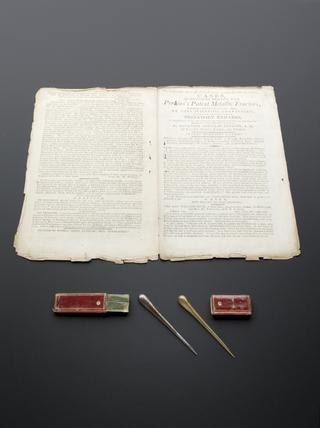




Cardiac pacemaker, first implantable model, made at St. George's Hospital, prior to commercial availability, 1961-1962
Made at St George’s Hospital, London, this is the first British example of a cardiac pacemaker that was fully implantable in the chest. Developed in the 1960s, cardiac pacemakers give out regulated electrical impulses to stimulate the contraction of the heart muscles to provide sufficient rate of heartbeat. Pacemakers are often implanted into the chests of people whose natural pacemaker is too slow or who have a condition where the electrical pulses are impaired.
Powered by mercury-zinc batteries, the pacemaker was expected to last about five years and would then be replaced. This example measures a little over 50 mm high. Today, one million people worldwide are fitted with pacemakers.
Details
- Category:
- Therapeutics
- Object Number:
- 1981-1518
- Materials:
- case, plastic, metal and plastic
- Measurements:
-
overall: 20 x 42 x 56 mm
- type:
- pacemaker
- credit:
- St. Georges Hospital (Tooting)


